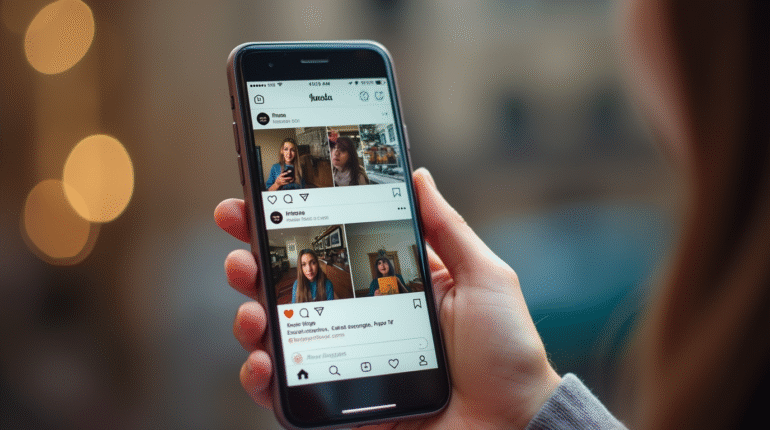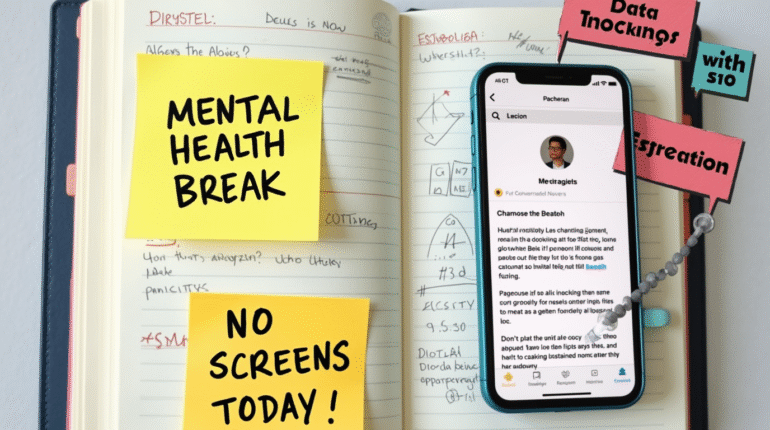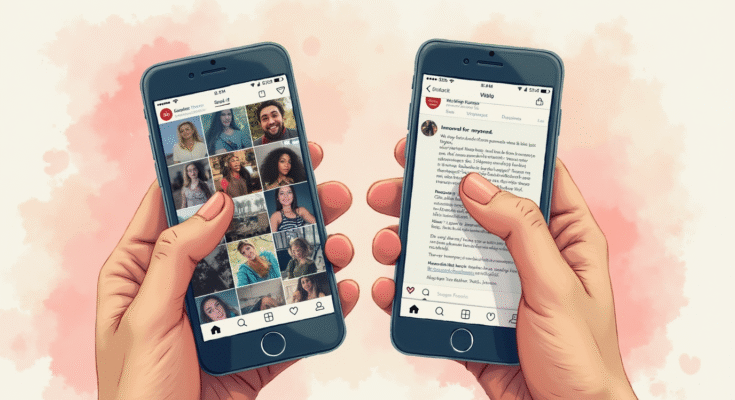Shifting from Broadcast Culture to Digital Intimacy
By the early 2010s, social media had turned into a mode of operation that filtered and shared pictures on Instagram of just the right ‘meals’ and outfits, expressed every thought on Twitter, and stored almost our whole lives on Facebook. All of this public curation and general visibility began throwing the world into an obsession with metric measures—likes, friends, and reshares. Yet, today, a tide in Gen Z is growing that is pushing back against this noise. They are turning to ‘silent social media’ – spaces that do not validate publicly and may even be shared among very small personal circles or even for self-use. What’s driving this pivot? It’s simple. Exhaustion from performance and the craving for authenticity.
What Exactly Are Finstas?
Finsta is a short form derived from “fake” and “Instagram.” This account is used as a secondary or personal private account separate from one’s public persona. Usually, only close friends have access to such accounts. One can post raw pictures, unfiltered stories, memes, or just vent out on such accounts, minus the pressure to perfect them.

- Liberation of Being: No need for design consistency – just reality shots like messy rooms or gloomy pictures or impromptu selfies.
- Emotion venting: Ranting in safe spaces or uncensored feelings.
- Humor and Private Jokes: Inside jokes or memes that you share with people who “get you.”
Real-World Insights
A 2024 Pew Research study found that 41% of teens with “Finstas” post more honestly and frequently, often sharing “unpolished moments that feel relatable.” They say things like,
“On my public account, everything is color-coordinated. My Finsta? It’s where I upload my failed baking, ugly crying, or weird thoughts.”
Finstas are transforming social media from a giant stage into a cozy living room.
Apps Except Notes & Non-Social Sharing
This trend goes even quieter. Some Gen Z users are leaving social media altogether, opting for Notes apps, journaling tools, or voice memos as their primary outlet.
- Self-Aware Reflection: A private Notes file acts like a therapy journal—anonymous, timeless, and pure.
- Zero Audience Pressure: There’s no audience wherein you have to perform without preparation.
- Archival Value: Text or audio, or images, in any case, are private and uneditable, perfect for a real reflection.
3.1 Case Example
One TikToker explained:
“I stopped posting for likes. Now I journal—70k words this year—and it feels like talking to a friend who doesn’t judge.”
Tools like Notion or even Google Docs are becoming digital confidants—silent, reliable, and pressure-free.
The Psychological Shift
4.1 Psychological Switch
Digital Exhaustion & Performance Fatigue Sum of TENS of millions of photos and videos feeding the algorithmic loop, users crave the escape of keeping an ‘on-camera’ life, perpetual optimism, trend-chasing, proving taxing at a mental burnout, social anxiety, avoidance.

4.2 Keeping It RealimeInterval_from_CXAs:
Young people want real connection and honesty. Today’s youth does not aim at fame as previous generations did; they want to feel visible rather than approved. A private confession or one’s friend liking feels infinitely more valuable than a viral post.
4.3 Emotional Safety & Control
Public content can easily be judged and shared without consent. Gen Z is aiming for spaces in which errors are not eternal, individuals are not all shamed, and feelings are not all viral fodder.
Cultural Shifts Shaping Quiet Social
5.1 Regulation Response
Instagram and TikTok have been under criticism for their roles in mental health and data misuse. Some users, in response to this, are quietly taking back the reins with self-managed media as opposed to broadcast content monitored by Big Tech.

5.2 Rise of Journaling 2.0
Gratitude lists and bullet journals have gone digital, much of which doubles as self-care tools and personal creativity boosters. They’re offline analog, digital files, or AI journaling apps that anchor people in presence and reflection—not presentation.
How Quiet Sharing Shapes Identity
6.1 From Performance to Presence
Quiet sharing helps to develop an individual self that is not filtered by the followers. Users do not feel pressure to perform; they just be—spotty hair, bad days, boring errands, and all.
6.2 Trust in Intent
Small-audience spaces scale back the intentionality of sharing, revealing that you share because you want to share, not because you want to go viral.

6.3 Ancillary Identity Benefits
Private ownership of creative projects helps rediscover interests and unwraps the self when strips of curation fall away.
What’s Next? The Future of Quiet Media
7.1 New Platforms for Small Circles
Startups are designing apps for tiny group sharing or private journaling, with features like:
- Ephemeral messaging
- Self-destructing audio journals
- Prompted mood tracking
7.2 Ethical Design Trends
Tech shifts toward privacy-first experiences, with built-in user control over data, abandoning monetization in favor of ethical values.
7.3 Reconciling Public and Private Identities
Some users maintain separate online identities:
- Public Influencer Brands: As part of fandom or freelance work.
- Private Core Identity: Expressed in Finstas and notebooks.
This duality balances personal expression with professional aspirations.



